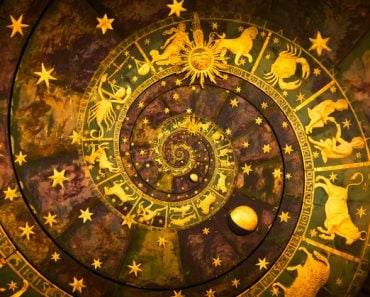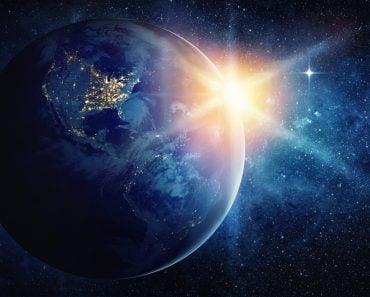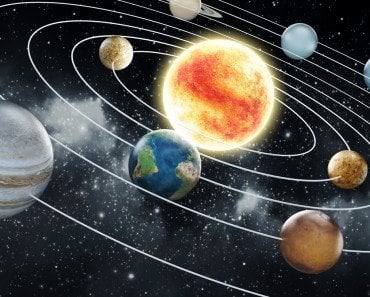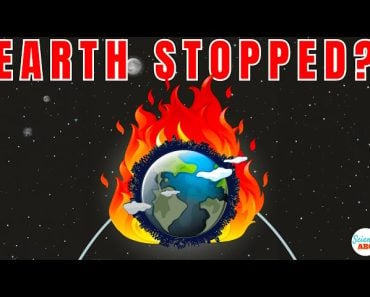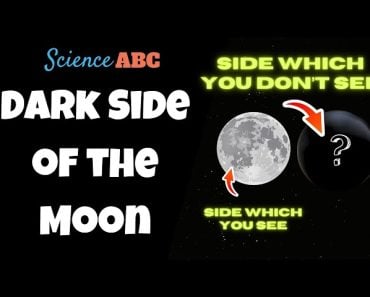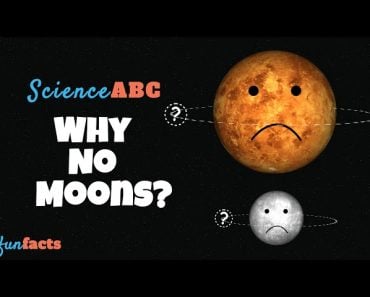Most of the planets spin in a counter-clockwise direction (prograde motion) including our Earth. But only two planets, Venus and Uranus spins in clockwise direction (retrograde motion).
At this point in life, we should all know the basics of our solar system, namely that there are eight planets that rotate about themselves on an axis in addition to revolving around the sun in an orbit.
However, did you know that within our solar system, there are a few quirky planets that do not spin in the same direction as Earth and most other planets?
Recommended Video for you:
Which Planets Rotate In A Different Direction?
Venus and Uranus are the two anomalies when it comes to rotating on their own axis. These planets rotate in the clockwise or retrograde direction while all the other planets rotate in the anticlockwise (prograde) direction.
Which Way Does The Earth Rotate?
The Earth rotates in the counter-clockwise direction like the majority of the planets in our solar system. It has an axial tilt of 23o in the prograde direction. We have used the word ‘prograde’ and ‘retrograde’ so far, what do they actually mean? Let’s find out.
What Is The Prograde And Retrograde Rotation?
The rotation of the planet around its axis can be generally of two types: prograde and retrograde. Prograde rotation indicates that the motion is in the same direction as the Sun’s rotation—which is counter-clockwise—if you’re looking down on Earth’s north pole. Retrograde rotation is the opposite of that (clockwise). You can learn more about retrograde motion here.
Most planets in our solar system, including Earth, rotate counter-clockwise or prograde direction, but Venus and Uranus are said to have a retrograde or clockwise rotation around their axes. Also, all the planets have some tilt i.e., their axis of rotation is not perfectly straight but rather tilted a bit. Except for Venus and Uranus which are aberration anyways when it comes to rotation, planets in our solar system generally have a tilt between 2o to 29o.
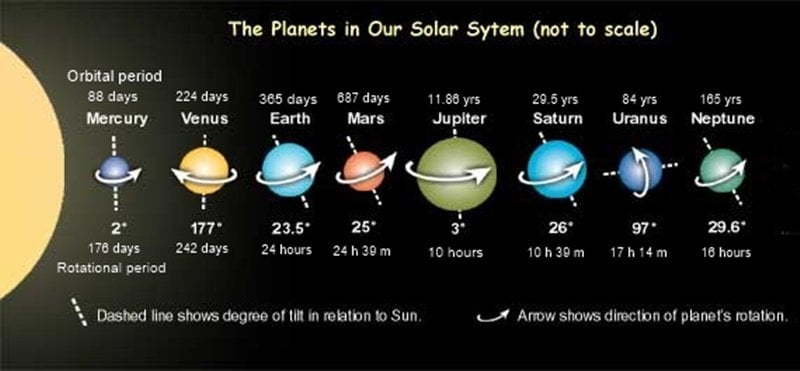
Uranus has a tilt of 97o which makes its rotational axis almost horizontal to the orbital plane. This means instead of rotating sideways like other planets Uranus rotates top to down! Venus tilt is 3o or 177o based on which theory you’d like to believe (more on this in a short while).
Why Do Uranus And Venus Rotate Differently?
One of the most popular explanations for the anomalies in the rotational direction is that in the early history of our solar system, Venus and Uranus both used to spin counter-clockwise just like the other planets. However, in the events that followed later, Venus reversed its direction and Uranus tumbled on its axis. Let’s understand them one by one.
Why Venus Spins Backward?
When scientists began investigating Venus in the 50s and 60s, they expected it to be pretty languid. However, to their surprise, Venus turned out to be quite remarkable. Venus and not Mercury was discovered to be the hottest planet of our solar system and the surface of the Venus turned out to be an inferno of acid rain! And the most bizarre thing from a rotational dynamics perspective was its reverse rotation.
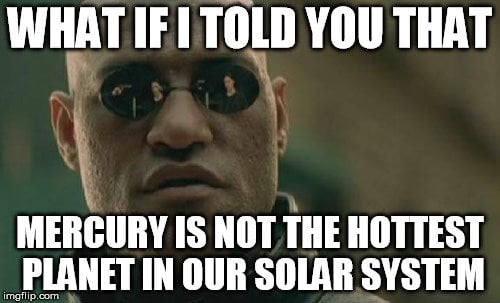
Although in the subsequent studies we have done on this planet, we discovered a lot about its atmosphere, we aren’t exactly sure of why it spins backward. But there are a few theories which try to answer why Venus spins in retrograde motion.
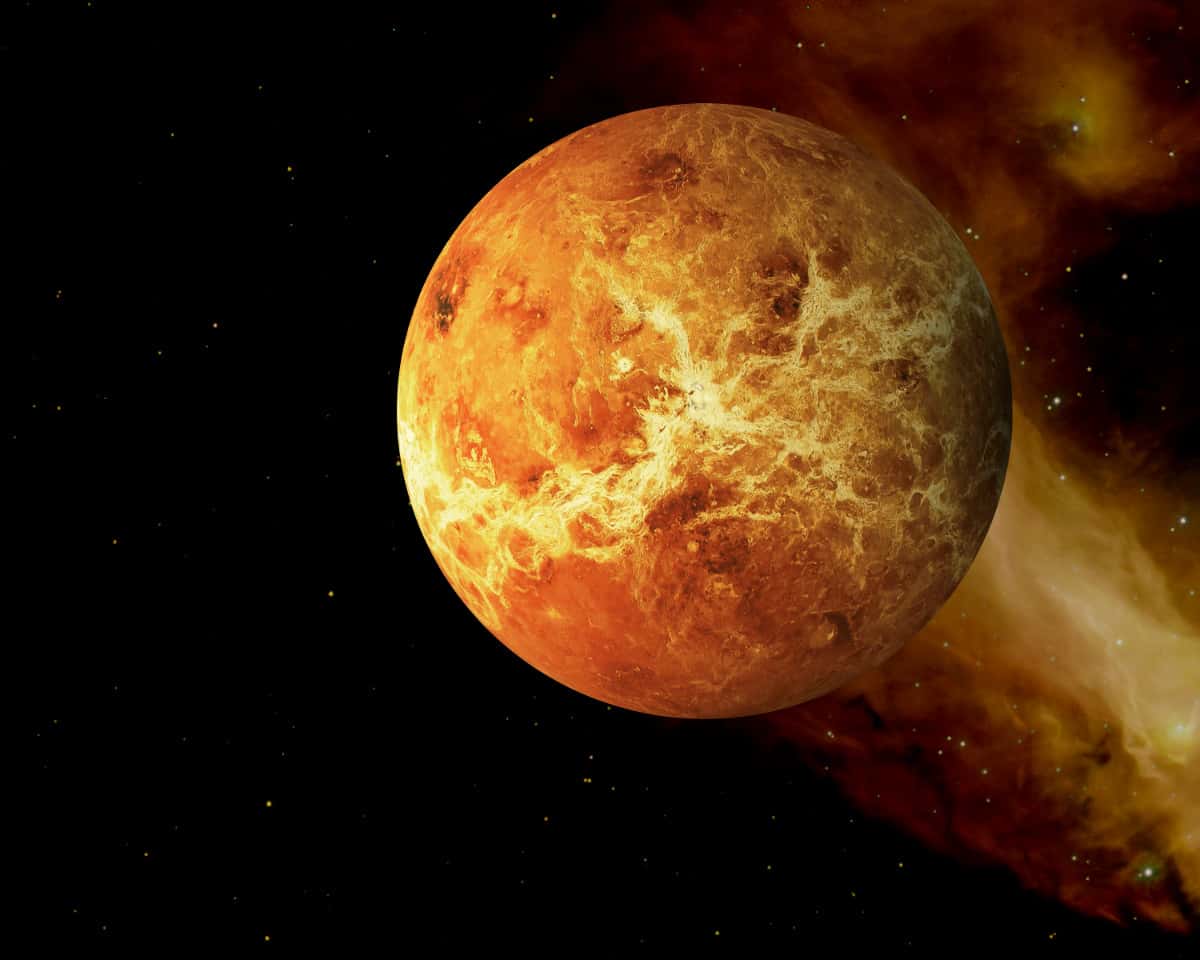
Impact Of A Collision
One of the early hypotheses explaining why Venus spins backward is that millions of years ago when Venus used to spin in a prograde motion, it was hit hard by a giant asteroid that reversed its direction. This hypothesis was refuted when a team of researchers working on the radar data detected anomalies in this idea during their own study. They concluded that the possibilities to hypothesize why Venus spins the wrong way are limited purely based on imagination. Supporting evidence for the same is harder to come by. Critics of this collision impact hypothesis say that asteroid big enough to reverse Venus rotation would also be strong enough to destroy the planet itself!
Frictional And Tidal Forces
Then another team of researchers presented another evidence-based hypothesis. They reckoned that the Venus is actually spinning the same way since its inception but it’s just that at some point it got flipped i.e. turned upside down! Now the question arises from this hypothesis: what made the planet flip? Well, this could happen because of Venus’s atmosphere and mysterious process happening under its interior.
Venus is differentiated i.e.; it has layers like our own planet. Like Earth, Venus too has a core covered by the mantle which is then covered by the crust. Now as this planet spins on its axis, there would be friction between the core and the mantle. Moreover, Venus has a really thick atmosphere, which experiences strong tidal forces. This hypothesis suggests that at one point in the past the strong friction between core and mantle and high atmospheric tidal pull could have generated large enough torque destabilizing the planet and flipping it over by almost 180o. That’s why many believe Venus is flipped by 177o while others reckon it got a tilt of 3o.
Sun’s Magnetic Field
If you are not convinced with 177o flip idea, there are a few more hypotheses. One of them is that Venus may have gradually slowed down and then reverse its direction. The proponent of this hypothesis reckons this could have been triggered by interaction with the Sun’s magnetic field or combination of this interaction and atmospheric tides. This hypothesis suggests that the Venus harsh atmosphere would have been the first mover in the reverse direction. Then this would have provided the torque required to rotate the whole planet in the reverse direction.
Consolidation After Collision
Interestingly the original collision impact theory which was first conceived to rationalize why Venus rotates the wrong way is actually making a comeback in astrophysics academia—or at least it’s another version is. Recent research suggests that in the early days of the solar system, Venus used to be much smaller than it is now and a nearly equal-sized celestial object collided with Venus, reversing its original prograde rotation. Instead of destroying the Venus, those two pieces accreted together to form a larger-sized planet that we see today. Unlike the original collision impact theory, there is some potential evidence for this proposition.
Based on Venus’s topography, scientists reckon that there isn’t much water in the planet’s interior compared to Earth. A collision on Venus could have provided energy to get rid of it. This hypothesis thus justifies why Venus is so dry. But not all experts agree to this proposition. Some argue that Venus lost its water on account of evaporation instead of collision.
Well, you see there are quite a few hypotheses giving disparate reasons on why Venus spins backward. To say that for sure, we need to know more about Venus’s early dynamics specifically its rate of rotation and axial tilt. Unfortunately, it’s hard to get evidence about Venus’s initial dynamics from billions of years ago. So, unless we build a really good time machine this would continue to be a hotly debated topic!
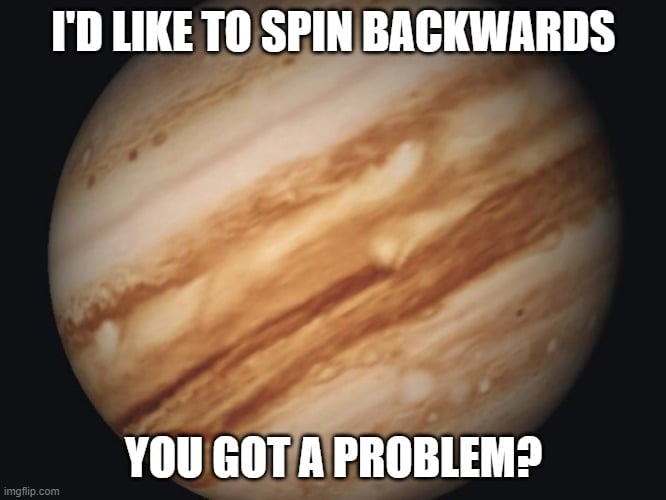
Why Uranus Rolls Instead Of Spinning?
Another planet that piques the interest of astronomers on account of its eccentric rotational dynamics is Uranus. All the planets spin on their axis, albeit with a little tilt. But the Uranus is tilted so much that it rolls rather than spinning! With a tilt of 97oit has a really unique orientation of spin. Moreover, even Uranus’s rings and planets are tilted by the same degree. Uranus Ferris wheel-like rotation has surprised many astrophysicists for decades.

One of the pertinent questions about Uranus is why is it lying on its side? Similar to the conjecture drawn for Venus’s rotation, researchers posit that in the early days, Uranus had the normal prograde motion. But somewhere down the line, it was struck by a heavy celestial body (larger than the size of Earth), tilting this ice giant by 97o and also leading to the formation of rings and moons that revolve with the same tilt around it. One study published in 2011 suggest that it would have taken more than one impact to get this outcome of tilted rotation.
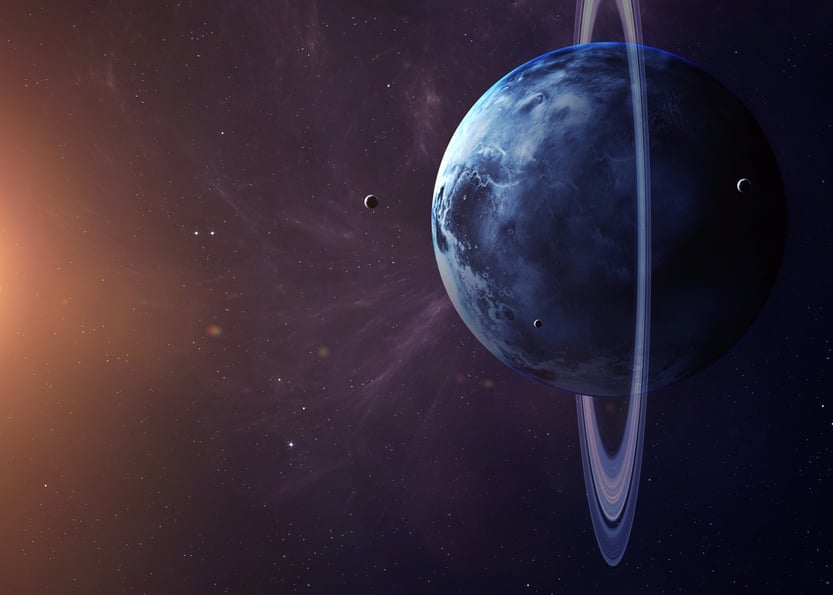
We don’t have quite as much information about Uranus as we do for Venus. That’s because Uranus is far away from Earth—approximately 3 billion kilometers away. There is only one spacecraft that went pass the Uranus and that is the epic Voyager 2 which happens to be the farthest man made object that has travelled in space so far.
Many physicists reckon we can only know why Uranus is tilted so much on its axis if we could investigate its interiors. And to do that we would need gravity measurement which is only possible by sending an orbiter to revolve in the orbit of the Uranus. And as we just learned that only one spacecraft has reached Uranus so far—that too three decades back! Exploration of Uranus is under NASA’s radar for future space missions. In the near future, we could see an orbiter finally unveiling the mystery behind the eccentric rotation of this icy cold planet!
References (click to expand)
- In Depth | Uranus - NASA Solar System Exploration. The National Aeronautics and Space Administration
- Why do the Planets in our Solar System Orbit the Sun Counter-Clockwise? | Ask an Astronomer - blogs.nrao.edu
- Dobrovolskis, A. R. (1980, January). Atmospheric tides and the rotation of Venus II. Spin evolution. Icarus. Elsevier BV.


